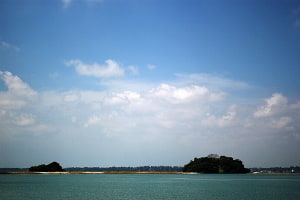
Apart from the casino, the proposed complex was also to feature a greyhound racetrack, a luxury hotel, as well as alluring amenities such as a Turkish bath and a number of massage facilities.
Singapore’s first-ever Prime Minister, Lee Kuan Yew, had told local media about the attractive proposal. Yet, he had pointed out that if established, the casino would have been intended for foreign visitors from the Asia-Pacific region as well as from the rest of the world, and not that much for Singaporeans. The official had contended that a venue of that kind might have had a negative impact on local community. Prime Minister Lee Kuan Yew took his position from 1959 to 1990.
Kenneth Michael Byrne, who had been appointed as Chairman of the Tourist Promotion Board during Prime Minister Lee Kuan Yew’s tenure, had explained that Singapore officials had been interested in developing that particular area into a hotel and casino complex as it had been uninhabited. Thus, visitors would not have disturbed anyone when going there to gamble. What is more, it would have been easy to control the area as it was a particularly small one.
The original plan called for the construction of a $20-million venue on the Pulau Sejahat island, which had formerly been a British port. The complex was to spread over 1.6 hectares of land. However, the project was called of as the island, which occupied only 1 hectare of land, was considered too small for such an ambitious plan.
Singapore legalized its casino industry in 2006 when the local government approved the construction of two integrated casino resorts – Marina Bay Sands and Resorts World Sentosa. Both complexes were launched in 2010 and proved to be an instant success, turning the Asian city-state into one of the most popular gambling destinations in the world. In fact, Singapore is currently the third most profitable casino hub in terms of gaming revenue generated annually within its borders, with Macau and Las Vegas being the only ones ranking higher.















